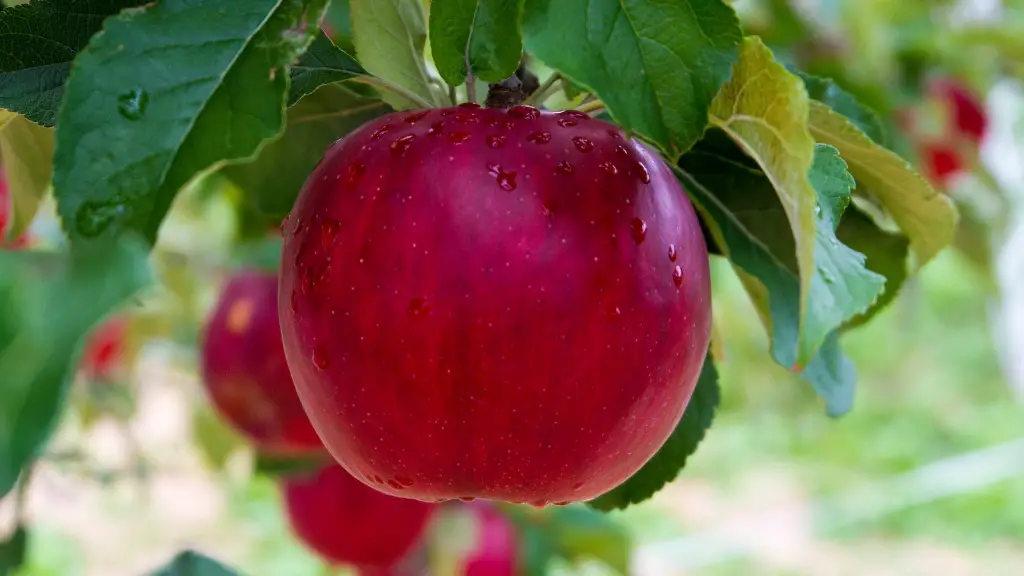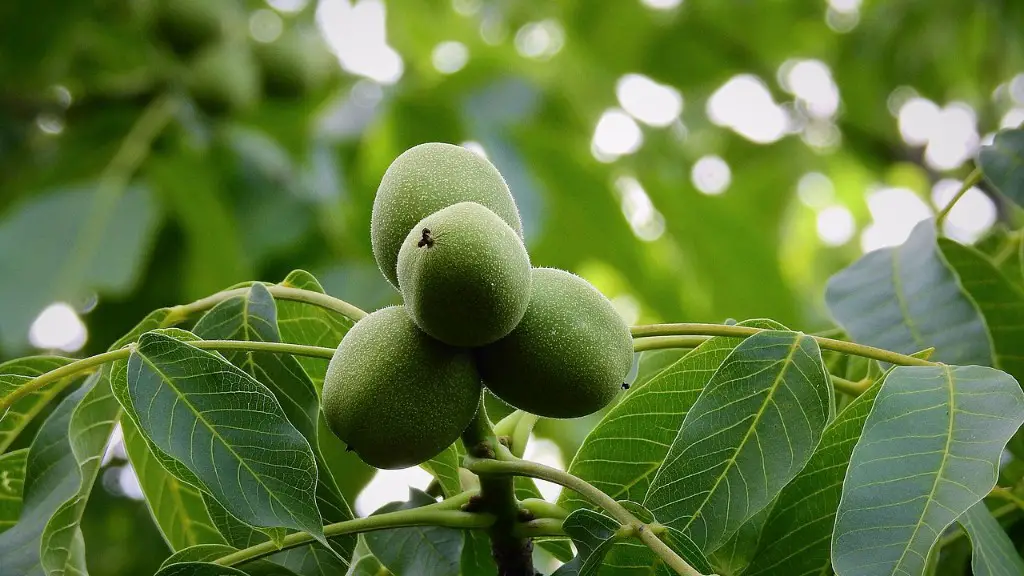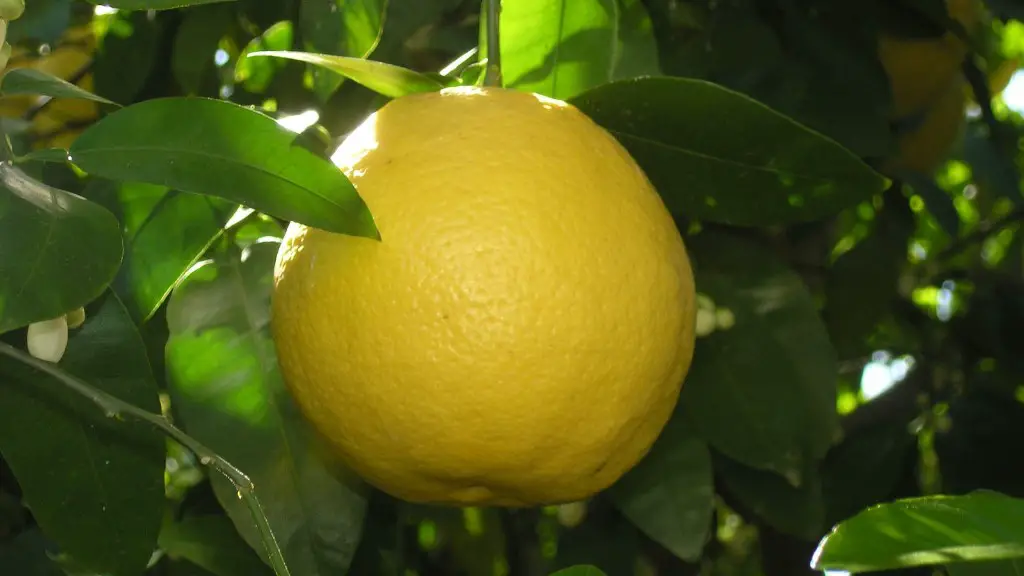When it comes to fruit tree care, pruning is a necessary part of keeping any tree healthy. And when it comes to apple trees, there isn’t just one “right” time to prune, but instead a range of times when pruning is safest and most beneficial. So when is the best time to prune an apple tree?
Apple trees are best pruned in late winter, just before the growing season begins. Pruning late in winter helps the tree get off to a quick start, encourages good flower production and the formation of strong, fruit bearing wood. Pruning should be done when the tree is dormant, and the branches are bare. This gives you a better view of the structure of the tree, allowing you to get rid of any weak or dead wood, thin out overcrowded limbs, and create a canopy that will help maximize sunlight exposure.
You should also consider pruning in early summer. This gives you the opportunity to remove any water sprouts, which are the unproductive shoots that grow quickly. Removing them will help reduce the competition for resources, thereby ensuring more energy is sent to the fruit. It’s also a great time to thin out any overly crowded branches, as well as to remove any branches that are dead or damaged.
If you have a young apple tree, you should definitely be pruning it to ensure good structure and health. Young trees need to be pruned regularly, so they can develop strong limbs that will hold up the weight of the fruit. Pruning also helps to encourage good branching by selecting branches that are growing in the right directions, and removing any that are too crowded.
Finally, if your apple tree is older and established, you should still be pruning it regularly to prevent overgrowth and to allow the tree to produce fruit. Pruning older trees should be done more for maintenance than for shaping the tree. The main goal is to remove any dead, damaged or overgrown branches, and to thin out any overly crowded areas.
Mature Apple Tree Pruning
When pruning an established apple tree, it’s important to thin out any excessive branches and to open up the interior of the tree, so light can penetrate to the inner branches. This will help encourage good flower production and fruit growth. When thinning out inner branches, try to create an open-center shape to the tree, with the branches radiating out like spokes on a wheel. This shape not only ensures good light penetration, but also reduces disease and pest invasion.
When removing branches, it’s important to make sure that your cuts are clean and flush to the trunk of the tree. If you make too deep of a cut, you risk damaging the bark and leaving the tree vulnerable to disease. If a large branch needs to be removed, start the cut about two inches away from the trunk, and then make two or three more cuts so that the branch will come away easily without tearing the bark.
Finally, you should also be careful not to prune away too much of the tree. Over-pruning can reduce fruit production and encourage shoot formation rather than flower and fruit development. You should aim for removing no more than a third of the canopy each year when pruning.
Trimming, Not Shearing
When pruning an apple tree, the goal should be to shape and train the tree, not just to create a neat, uniform look. To accomplish this, you should try to avoid shearing the tree into a ball-like shape. Shearing cuts off all lateral branches, leaving the tree with few, if any fruits or flowers. Instead, when trimming the tree, aim for removing only a few branches at a time to open up the canopy and reduce overcrowding.
The best way to trim an apple tree is to use a combination of thinning cuts and heading cuts. Thinning cuts involve cutting back entire branches to their bud junction, thereby reducing overcrowded areas of the tree and creating more open areas for better light penetration and flower formation. Heading cuts involve cutting back the shoots and branches to lateral buds, which will encourage the development of new shoots in the areas you’ve trimmed.
When done properly, pruning an apple tree should be an ongoing process. You should aim to prune the tree every few years, unless it’s a young tree that requires annual pruning. Pruning regularly will help ensure healthy tree growth and good fruit production, and should be viewed as an important part of caring for any fruit tree.
Time of Year for Pruning
The general rule of thumb for pruning any fruit tree is to prune when the tree is dormant, or just before the start of the growing season. Pruning in late winter will help get the tree off to a quick start and encourage healthy flower production and good fruit formation. If a tree is very young, or has weak or dead wood, you may need to prune a bit earlier than that to give the tree the most support.
Since pruning can be quite vigorous, you should also keep an eye on the temperature and type of pruning you’re doing. Pruning on hot days or in bright sunlight can be very stressful for the tree, and should be avoided. Instead, try to do your pruning in the cool morning, when there is more moisture in the air and the tree will be less stressed.
Tools and Equipment
When it comes to pruning your apple tree, it’s important to use the right tools and equipment. It is important to use clean, sharp tools to ensure the least amount of damage to the tree and to avoid spreading any diseases. Pruning shears and loppers are the most commonly used tools for pruning an apple tree, but you’ll also need a sharp pruning saw for removing larger branches.
You may also want to use a pole pruner for trimming taller trees. Pole pruners attach to the end of a pole and allow you to reach branches that are beyond your reach. It’s important to make sure that the pole pruner you use is in good condition and the blade is sharp. Dull blades may cause damage to the bark, which can lead to pest problems.
In addition to pruning tools, you may also want to invest in a pruning sealer to seal off any wounds you create when pruning. A pruning sealer helps to protect the tree from disease and pests, as well as to allow the wound to heal properly. Be sure to apply the sealer immediately after pruning to ensure the best results.
Maintenance and Cleanup
The final step in pruning an apple tree is to do some maintenance and cleanup. This includes removing any diseased wood or branches and properly disposing of it away from the garden. You should also inspect the tree for any pests or damage, and take steps to treat any problems you find.
It’s also important to inspect the pruning tools you used and clean them thoroughly to avoid spreading any diseases or pests. And once the pruning is done, you should rake up any leaves and debris from the ground, to help reduce the risk of disease and keep your apple tree healthy.



